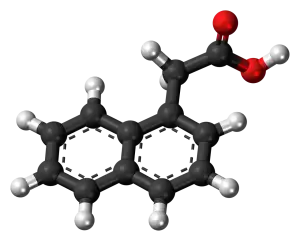Exploring the Effects of Eating Corn Starch: A Comprehensive Guide to Pica and Health

- Understanding pica and its causes
- Risks and potential health complications associated with eating corn starch
- Nutritional value of corn starch and its impact on the body
- Tips for managing pica and reducing the consumption of corn starch
- Healthy alternatives to satisfy cravings for corn starch
- Seeking professional help and support for individuals with pica
Eating corn starch, a common ingredient found in many food products, may seem harmless to some. However, for individuals with pica, consuming corn starch becomes more than just a culinary preference - it becomes a compulsion. Pica is a disorder characterized by the persistent craving and consumption of non-nutritive substances. In this article, we will delve deeper into the health implications of eating corn starch and explore alternative approaches to managing pica.
Understanding pica and its causes
Pica is a disorder characterized by the persistent consumption of non-nutritive substances, such as corn starch. While the exact causes of pica are still unknown, it is believed to be linked to nutritional deficiencies, iron deficiency anemia, pregnancy cravings, and certain mental health conditions like obsessive-compulsive disorder (OCD) or autism spectrum disorder. Understanding the underlying causes of pica is crucial in addressing this behavior and promoting overall well-being.
Risks and potential health complications associated with eating corn starch
Eating corn starch may seem harmless, but it can pose several risks and potential health complications. One of the main concerns is the high calorie content of corn starch, which can contribute to weight gain and obesity if consumed in excess. Additionally, corn starch lacks essential nutrients such as vitamins, minerals, and fiber, leading to nutritional deficiencies over time. Moreover, excessive consumption of corn starch can disrupt blood sugar levels and increase the risk of developing diabetes. It can also cause digestive issues like bloating, gas, and constipation. Therefore, it is important to be aware of these risks and limit the intake of corn starch for better overall health.
Nutritional value of corn starch and its impact on the body
Corn starch is primarily composed of carbohydrates, providing a source of energy for the body. It is low in fat and protein, making it a suitable option for those following a low-fat or low-protein diet. However, it lacks essential vitamins and minerals, such as vitamin C and iron. Consuming excessive amounts of corn starch can lead to weight gain and an increased risk of developing chronic conditions like diabetes. It is important to consume corn starch in moderation and ensure a balanced diet that includes other nutrient-rich foods.
Tips for managing pica and reducing the consumption of corn starch
To manage pica and reduce the consumption of corn starch, it is important to take certain steps. Firstly, identify triggers that lead to cravings for corn starch and try to avoid them. Secondly, find healthier alternatives such as fruits or vegetables to satisfy those cravings. Additionally, keeping a food diary can help track consumption patterns and identify any underlying nutritional deficiencies. Lastly, seeking support from healthcare professionals or support groups can provide guidance and assistance in managing pica effectively.
Healthy alternatives to satisfy cravings for corn starch
There are several healthy alternatives that can help satisfy cravings for corn starch. One option is to incorporate more whole grains into your diet, such as quinoa or brown rice. These grains provide a similar texture and can be cooked and seasoned to your liking. Another alternative is to snack on crunchy vegetables like carrots or celery, which can provide a satisfying crunch without the negative health effects of consuming corn starch. Additionally, incorporating more protein-rich foods like lean meats, beans, or tofu into your meals can help reduce cravings for starchy foods. Remember to focus on a balanced diet that includes a variety of nutrients to support overall health and well-being.
Seeking professional help and support for individuals with pica
Seeking professional help and support is crucial for individuals with pica. If you or someone you know is struggling with the compulsion to eat corn starch or other non-food items, it is important to reach out to a healthcare professional. They can provide a proper diagnosis and develop a personalized treatment plan. Additionally, support groups and therapy sessions can offer guidance and understanding from others who have experienced similar challenges. Remember, seeking help is a vital step towards promoting overall health and well-being while addressing pica.
In conclusion, while eating corn starch may provide temporary satisfaction for individuals with pica, it is important to prioritize overall health and well-being. The risks and potential health complications associated with consuming excessive amounts of corn starch cannot be ignored. It is crucial to seek professional help and support to address the underlying causes of pica and develop healthier coping mechanisms. By managing pica and reducing the consumption of corn starch, individuals can promote their overall health and ensure a balanced diet. Remember, there are healthy alternatives available to satisfy cravings and maintain a nutritious lifestyle. Let's embrace freshness in every food creation while prioritizing our well-being!
Published: 08. 01. 2024
Category: Health



